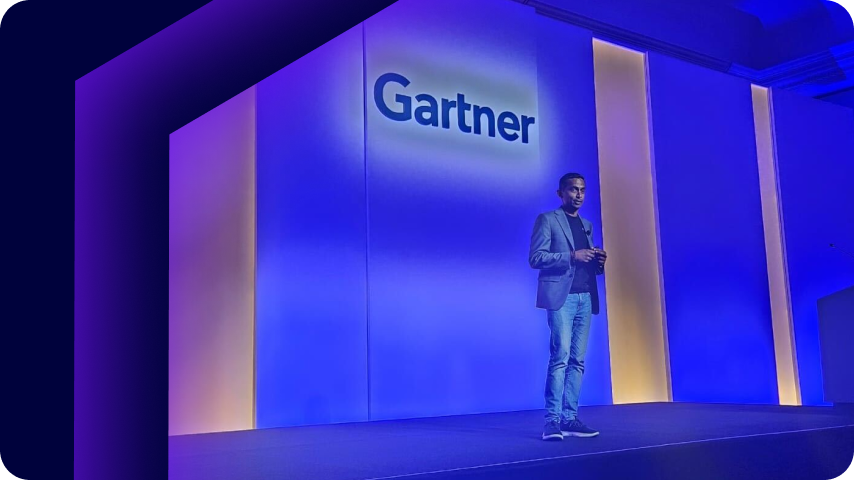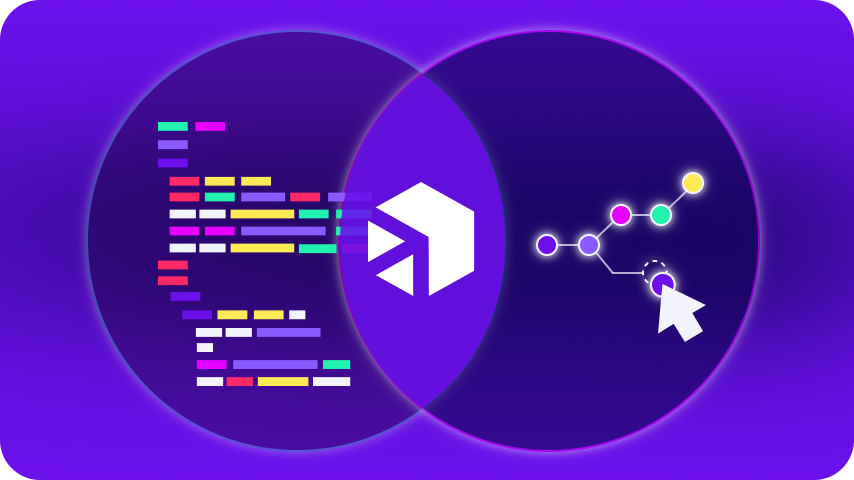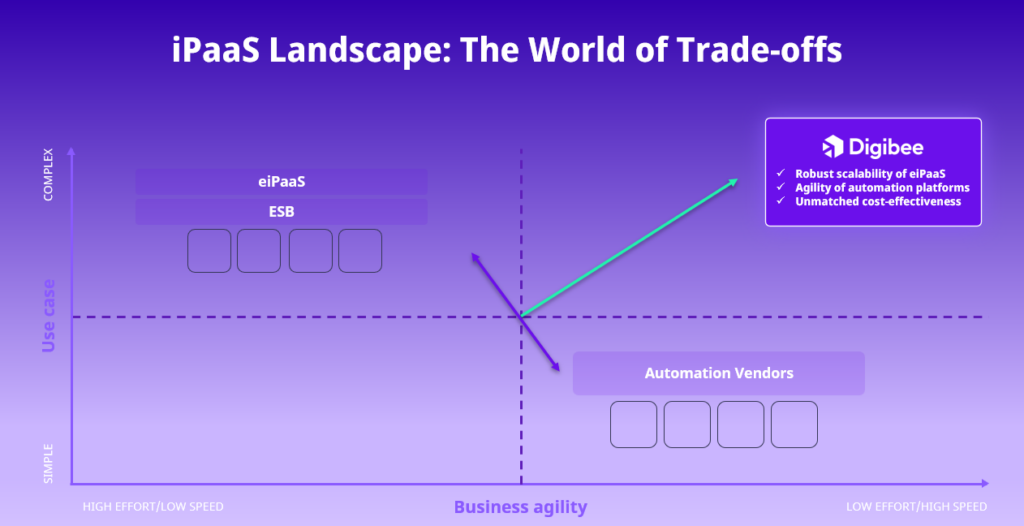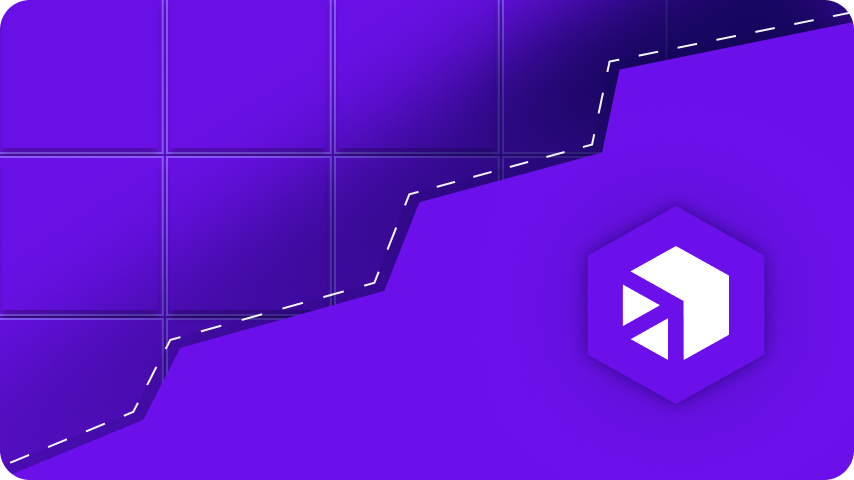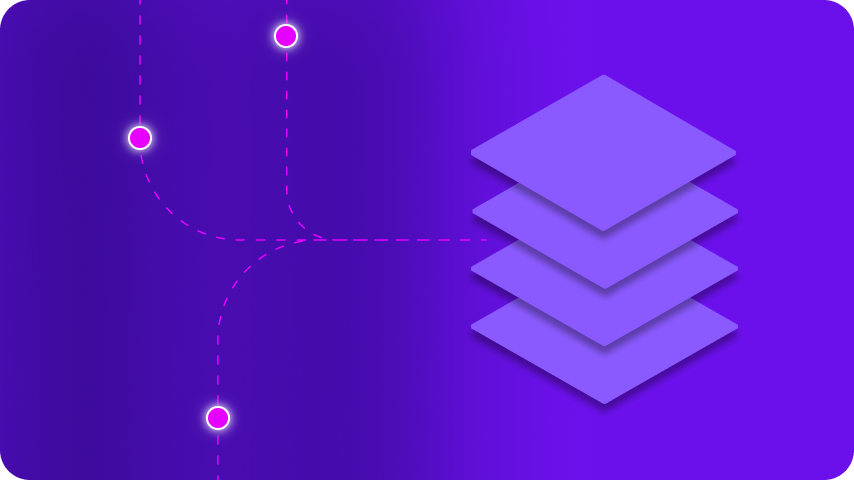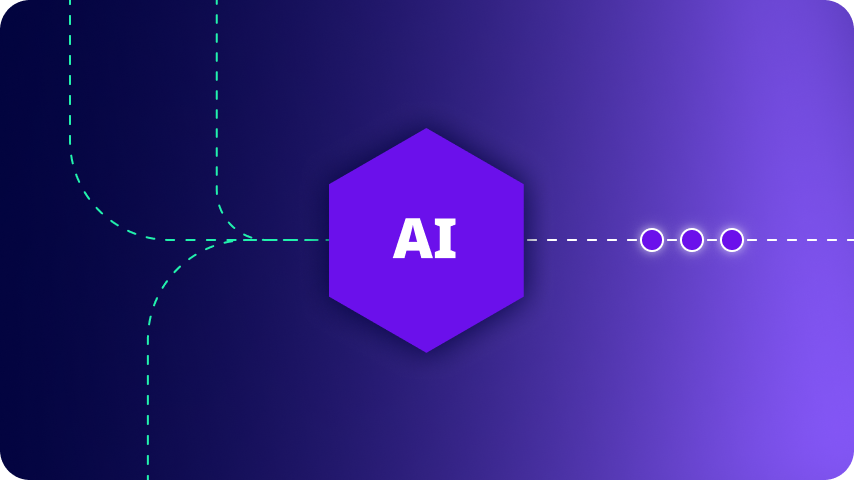
Arquitetura de integração é um conjunto estratégico de infraestruturas, serviços, protocolos e sistemas que forma a base para integrar aplicações e dados empresariais. Geralmente liderada por um arquiteto de TI corporativo ou especialista em integração, a arquitetura de integração viabiliza a automação, o acesso a dados e análises em tempo real, além de workflows empresariais conectados.
Empresas que contam com uma arquitetura de integração bem projetada possuem a flexibilidade necessária para experimentar e escalar workflows conectados de diversos tipos. Como os dados fluem livremente por seus sistemas e as aplicações se comunicam de maneira eficiente, essas empresas têm mais chances de ter sucesso na transformação digital e alcançar resultados mais rápidos em comparação às organizações menos integradas.
>> Agende uma demonstração personalizada com nossa equipe de especialistas e veja como o iPaaS da Digibee trará eficiência ao seu negócio.
Comparando diferentes tipos de arquitetura de integração
A arquitetura de integração evoluiu de conexões simples ponto a ponto para plataformas de integração empresarial capazes de suportar milhares de serviços e aplicações. Empresas com necessidades complexas de integração geralmente utilizam múltiplos modelos, desde implementações legadas codificadas manualmente até um conjunto de APIs modernas e robustas.
Ponto a ponto vs. hub-and-spoke
A integração ponto a ponto (P2P) é um método tradicional que conecta duas aplicações usando código personalizado ou APIs, sincronizando dados entre elas em intervalos regulares. No entanto, a abordagem PXNUMXP não lida bem com grande volume ou complexidade, o que leva as equipes de engenharia a adotar outros modelos conforme as necessidades de integração crescem.
A arquitetura hub-and-spoke é uma alternativa comum ao P2P. Nesse modelo, um hub central atua como o principal ponto de processamento e roteamento dos dados trocados entre várias aplicações (os “spokes”). Tradicionalmente, todas as integrações passam pelo hub, o que simplifica a comunicação, mas pode criar gargalos. Com o avanço das plataformas modernas de integração, o modelo hub-and-spoke evoluiu para atender às demandas de empresas que migraram sistemas para a nuvem, oferecendo maior flexibilidade e escalabilidade.
A evolução da arquitetura orientada a serviços (SOA)
A arquitetura orientada a serviços (SOA) é uma abordagem que utiliza serviços conectados e reutilizáveis para executar processos de negócios e criar funcionalidades de software. Modelos como hub-and-spoke e barramento de serviços empresariais (ESB) aplicam o SOA de formas diferentes. No hub-and-spoke, cada serviço é um spoke que envia dados para o hub centralizado. Já no ESB, os serviços se integram de forma mais modular.
Um exemplo simples dos benefícios do SOA é a autenticação. Em vez de codificar autenticação separadamente em cada aplicação, os desenvolvedores utilizam um serviço empresarial, como Okta ou auth0, que é conectado uma única vez à plataforma de integração e reaplicado conforme necessário.
Embora a implementação de SOA tenha sido historicamente cara e demorada, as plataformas modernas de integração permitem melhorias incrementais e econômicas em larga escala. A maioria das empresas hoje utiliza iPaaS, ESB ou ambos para gerenciar integrações dentro desse framework.
Enterprise Service Bus (ESB)
A Enterprise Service Bus) surgiu como uma forma de expor integrações de maneira síncrona entre sistemas legados e modernos, utilizando um barramento de mensagens. Com o tempo, o ESB se tornou mais descentralizado, eliminando pontos únicos de falha e permitindo que os desenvolvedores conectem aplicações ao barramento sem depender de componentes complexos de infraestrutura.
A plataforma de integração como serviço (iPaaS)
Aplataforma de integração como serviço, ou iPaaS, é uma plataforma que os desenvolvedores utilizam para criar e gerenciar combinações de arquiteturas e modelos de integração de forma escalável. Ela oferece componentes reutilizáveis, interface low-code, infraestrutura gerenciada, integrações pré-configuradas e suporte corporativo.
As plataformas de integração permitem uma iteração mais flexível do modelo hub-and-spoke. Em vez de exigir que todas as integrações passem por um único hub centralizado, a iPaaS possibilita a gestão de múltiplos padrões de integração em uma única plataforma, aplicando regras e configurações globais em todo o sistema. Isso resulta em um fluxo de dados mais distribuído e eficiente, adaptado às necessidades específicas do negócio.
Por exemplo, considere um cenário em que os dados de uma ferramenta de análise de produto são enviados para um data lake para uso em uma plataforma de business intelligence (BI), bem como para acionar ações no próprio produto. Simultaneamente, os dados estruturados do seu CRM podem ser direcionados para um data warehouse separado, mas, eventualmente, também alimentam a mesma ferramenta de BI para fornecer uma imagem mais completa da atividade do cliente no seu produto. Neste caso, o “hub” é a plataforma de integração – dentro deste hub, os dados fluem de várias maneiras, cada uma otimizada para objetivos e eficiências específicos.
O iPaaS é considerada o padrão ouro para integrações. Ela permite que os desenvolvedores conectem aplicações e dados sem substituir sistemas legados, adicionar dívidas técnicas ou exigir meses de treinamento especializado. Independentemente da complexidade das necessidades de integração, a transformação digital pode ser realizada de maneira modular e segura, protegendo os sistemas existentes enquanto moderniza os processos de negócios.
Dois principais casos de uso da arquitetura de integração empresarial
Sua arquitetura de integração deve atender a dois objetivos principais: conectar aplicações para possibilitar a automação de processos e integrar dados para oferecer análises em tempo real, transparência e suporte à inteligência artificial (IA).
Integração de aplicações
O primeiro caso de uso é a integração de aplicações, ou seja, a conexão das aplicações que sustentam os negócios. Esse processo torna a automação de workflows e a execução de processos empresariais complexos possíveis em larga escala.
A média das empresas utiliza milhares de aplicações. A integração de aplicações conecta esses sistemas usando um ou mais dos modelos mencionados anteriormente, com o objetivo de otimizar a eficiência e reduzir custos, ao mesmo tempo em que protege os dados da empresa.
Integração de dados
O segundo caso de uso é a integração de dados, que consiste em conectar diversas fontes e permitir o fluxo de dados em tempo real por toda a organização. A arquitetura de integração empresarial possibilita a integração na nuvem, onde dados de sistemas legados e on-premises são integrados de forma segura e tornam-se acessíveis na nuvem. Isso abre um mundo de possibilidades: dados em tempo real podem ser usados para aprimorar a experiência do cliente, implementar workflows baseados em IA e experimentar novas tecnologias sem comprometer os sistemas subjacentes.
Os benefícios da arquitetura de integração empresarial
Quando as empresas tentam construir sua própria arquitetura de integração ou optam por uma solução econômica, as equipes de TI frequentemente acabam gastando mais tempo gerenciando a infraestrutura do que aproveitando suas integrações. À medida que cresce o número de sistemas que precisam ser integrados — especialmente uma mistura de ferramentas legadas, on-premises e em nuvem — a dívida técnica e os ajustes improvisados tornam-se difíceis de sustentar.
A arquitetura de integração empresarial é um conjunto de soluções seguras e escaláveis, projetado para grandes organizações que precisam gerenciar centenas (ou mais) de aplicações e ferramentas. Plataformas como iPaaS, gestão de APIs e plataformas de dados geralmente incluem recursos de nível empresarial, como segurança integrada, controles de acesso, alta disponibilidade e redundância, além de configurações globais que reduzem o tempo necessário para manutenção e governança. Algumas soluções também oferecem interfaces low-code, permitindo que desenvolvedores generalistas ou juniores criem integrações sem a necessidade de treinamento especializado.
Ao investir em uma arquitetura de integração empresarial, as equipes de TI colhem uma série de benefícios:
- Redução de custos com mão de obra – Desenvolvedores especializados em integração são frequentemente difíceis de encontrar ou caros para contratar. Com uma arquitetura de integração empresarial, muitas tarefas que esses profissionais realizariam já estão contempladas. Assim, a equipe interna pode criar integrações utilizando os recursos disponíveis.
- Escalabilidade e desempenho – Plataformas empresariais, como o iPaaS, são baseadas em infraestrutura gerenciada e nativa da nuvem, que se adapta conforme aumentam as necessidades de integração. Essas soluções oferecem maior confiabilidade do que sistemas gerenciados internamente e frequentemente incluem SLAs que garantem alta disponibilidade.
- Segurança e compliance – Com controles de segurança e recursos de governança integrados, a arquitetura empresarial facilita a adesão a leis de privacidade, a gestão de acessos e a criptografia de dados em trânsito entre aplicações e repositórios.
- Visibilidade de dados aprimorada – Quando os dados de todas as fontes e aplicações passam por uma plataforma bem governada, analistas podem explorá-los, compartilhá-los e criar produtos com confiança.
- Aumento da produtividade – A arquitetura empresarial, especialmente com componentes low-code, elimina grande parte do trabalho manual e da manutenção dos desenvolvedores. Isso libera tempo para outras atividades de desenvolvimento, enquanto as integrações criadas ampliam a produtividade de todas as equipes que as utilizam.
- Melhora na satisfação dos clientes – Ao conectar processos empresariais e dados, fica mais fácil oferecer suporte ao cliente em tempo real e com informações completas. Além disso, as equipes de produto podem usar essas integrações para criar dashboards para os clientes e incorporar dados em tempo real à experiência do usuário.
O que considerar ao escolher sua arquitetura de integração
Para adotar uma arquitetura de integração empresarial, é essencial investir em uma plataforma de integração como serviço (iPaaS). Um iPaaS geralmente oferece componentes escaláveis e reutilizáveis que facilitam para desenvolvedores gerenciar diversos modelos de integração e milhares de aplicações e serviços em um único lugar. Além disso, ele deve se integrar perfeitamente com as melhores soluções de API e ETL disponíveis no mercado.
O mercado de plataformas de integração é complexo. Algumas soluções exigem especialistas e treinamentos extensivos, enquanto outras ajudam sua equipe a avançar de maneira rápida e eficiente na modernização de integrações . Este guia ajudará você a entender as opções de iPaaS disponíveis, seus prós e contras, e como tomar uma decisão informada como comprador.
Aqui estão alguns dos principais recursos a serem procurados:
- Construtor de integrações low-code – A interface deve permitir que qualquer desenvolvedor crie integrações facilmente, sem a necessidade de treinamento especializado.
- Blocos de construção componíveis – Conectores pré-construídos ou as Cápsulas que os desenvolvedores podem usar para criar rapidamente integrações empresariais complexas.
- Monitoramento contínuo de integrações – A plataforma deve oferecer ferramentas para monitorar e gerenciar integrações centralmente, com alertas automáticos para possíveis problemas.
- Governança integrada – Configurações globais de segurança e acesso, ambientes seguros de teste e produção, e auditorias periódicas devem fazer parte da solução.
- Escalabilidade e alta disponibilidade – Infraestrutura gerenciada com recursos de autoescalonamento e balanceamento de carga para garantir desempenho consistente.
- Integração com soluções de gestão de APIs e ETL – A plataforma deve permitir conexão com os serviços de API e dados da sua escolha.
Digibee: uma plataforma de integração construída para escalar
Digibee é a única plataforma de integração que escala workflows de integração de aplicações ao mesmo tempo em que reduz custos, dívida técnica e o peso sobre as equipes de desenvolvimento. Ela permite que os desenvolvedores escolham qualquer modelo de integração e criem, testem, implantem e monitorem todas as integrações rapidamente em uma única plataforma flexível.
Para saber mais, faça nosso tour pelo produto ou solicite uma demonstração personalizada à nossa equipe de vendas.
